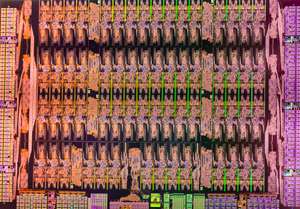'Photonic transistor' switches light signals instead of electronic signals

Electronic transistors, which act as miniature switches for controlling the flow of electrical current, underpin modern-day microelectronics and computers. State-of-the-art microprocessor chips contain several billion transistors that switch signals flowing in electrical wires and interconnects. With increasing data-processing speeds and shrinking chip sizes, however, wires and interconnects waste considerable energy as heat.
One alternative is to replace electrical interconnects with energy-efficient optical interconnects that carry data using light signals. However, a practical analogue of the transistor for optical interconnects does not yet exist. Hence, Vivek Krishnamurthy from the A*STAR Data Storage Institute and co-workers in Singapore and the United States are developing a practical 'photonic transistor' for optical interconnects that can control light signals in a similar manner to electronic transistors.
The researchers' latest photonic transistor design is based on prevalent semiconductor technology and offers attractive attributes of high switching gain, low switching power and high operating speed.
Importantly, the research team's design enables a switching gain of greater or equal to 2, which means the output signal is more than double the strength of the input signal. Hence, the transistor can be cascaded: the output signal from one photonic transistor is sufficiently strong so that it can be split to feed several others. Known as 'fan-out', this functionality means the design can become a building block to be scaled up to form larger circuits with many such switching elements connected together for all-optical processing on an optical interconnect platform for data- and telecommunications. Furthermore, Krishnamurthy says that the design consumes 10–20 times less power than the conventional all-optical switching technologies and can operate at very fast speeds.
The team's design consists of a circuit of coupled silicon waveguides that guide infrared light with a wavelength of 1.5 micrometers. Some of the waveguides feature an optically active material, such as an indium gallium arsenide semiconductor, that can amplify or absorb signal light depending on whether or not it is optically excited. During operation, the intensity of a short-wavelength routing beam is used to control the strength of an output beam by altering the amount of absorption and gain in the circuit.
The researchers are now working to experimentally realize their optical transistor. "We are realizing it on a silicon chip so that it will be compatible with current microelectronic industry standards to enable commercial deployment," explains Krishnamurthy. "Once we experimentally verify the prototype, we could further integrate it into large-scale optical switching systems for optical interconnects."
More information: Krishnamurthy. V., Chen. Y. & Ho S.-T. "Photonic transistor design principles for switching gain >=2." Journal of Lightwave Technology 31, 2086–2098 (2013). dx.doi.org/10.1109/JLT.2013.2262134





















